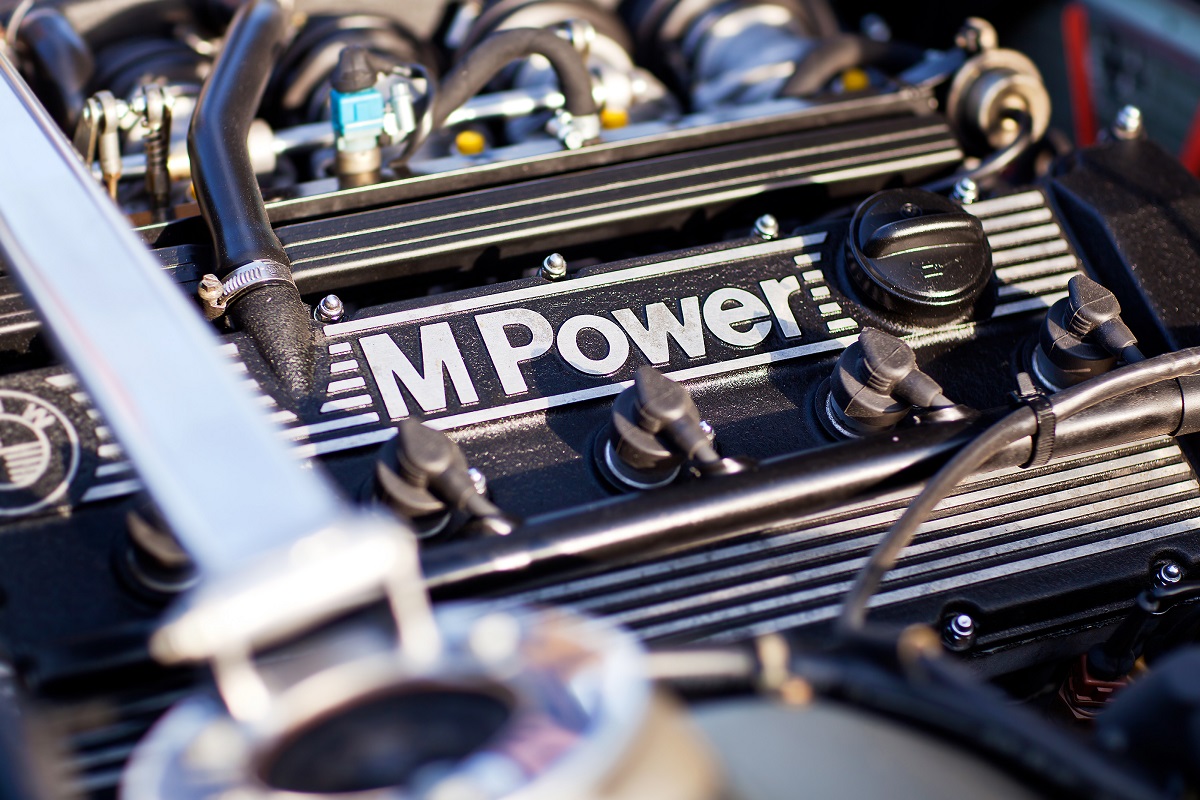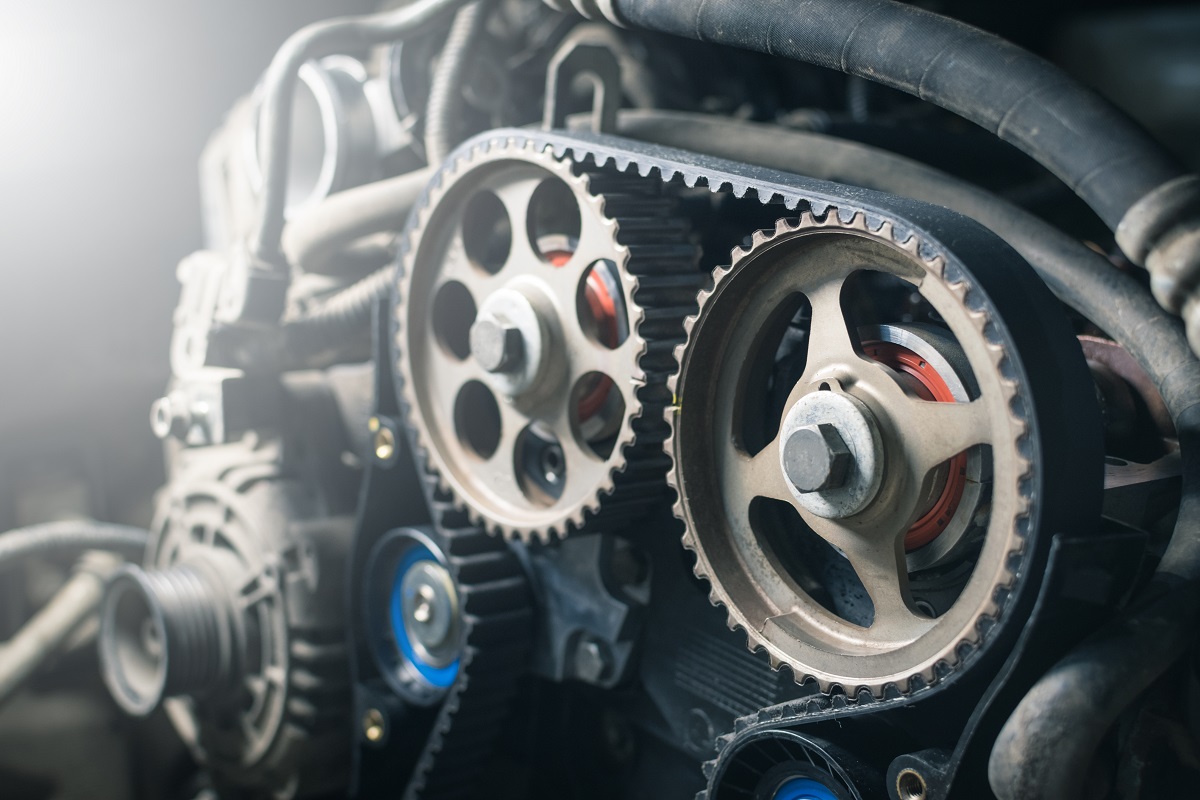Engine maintenance — the absolute core of automotive care and ownership, but also the bane of many drivers’ existence. Your engine is the most essential component in your car, hence it has to be on the top of your list of priorities.
In this segment of eEuroparts.com Car Owners’ Manual, we’ll discuss the basics of engine maintenance. We’ll cover all the procedures you’ll need to perform in order to keep your engine healthy, when these things have to be done and how often. We’ll also talk about the importance of using quality parts and lubricants, how they affect your engine’s health as well as its performance.

The Importance of Engine Maintenance?
Your average engine is an intriguing piece of machinery. To most, it’s just a noisy hunk of metal that vibrates and makes the car go. In reality, it’s a machine that harnesses the power of explosions thousands of times per minute, and turns that energy into forward (or backward) motion.
Every time you turn your ignition, you’re starting a chain reaction of pure violence — a battle between the explosive power of chemical reactions and the metal that is pushing back against it.
Keep that up for long enough and something will start degrading. Not to mention that said explosions are making numerous mechanical components spin and move at an incredible rate of speed. That wouldn’t be too much of an issue on its own if it wasn’t for the small thing called friction.
Most engines out there run on tight tolerances. The spaces between pistons and cylinder walls, cams, and other moving parts are incredibly tight and cause friction. Friction means heat, which translates to material fatigue. The only way to keep friction at bay is to use lubricants. Modern engine oils are designed to lubricate various engine components and prevent friction from causing any damage.
Yet, all modern oils have a finite lifespan and need to be changed periodically. If you don’t change the oil, it will degrade to a point where it no longer protects the engine. Hence, why oil changes are important.
Engine Maintenance – What Does It Mean?
Engine maintenance is a term that means a lot of things. We can differentiate between various maintenance cycles, some of which are annual or biannual, while others are far less frequent. That being said, the core of all engine maintenance are oil changes.
Oil Changes — How Often, and What Oil?
Engines are built to last for hundreds of thousands of miles. However, reaching such high mileages is only possible if you change your oil on time. We’ve already mentioned that engine oil degrades over time.
Constant and numerous combustion cycles, friction, high temperatures and other factors all take a toll on engine oil. At one point, the oil no longer offers any protection to internal engine components, which leads to their premature wear.
How Often Should You Change Your Oil?

Are you a fan of highly polarizing automotive subjects? Because this is definitely one of them. Here’s the thing — car manufacturers always give a recommendation on how often you should do oil changes on their cars, what type of oil you should use and more. These recommendations are based on various statistics, where average values are extrapolated and used as a guideline.
You’ll see car manufacturers recommend 10,000 to 20,000 mile oil change intervals for high quality synthetic oils like Motul and other top tier brands. Are these estimates accurate? It depends.
The thing you don’t often see in user manuals is that oil degradation rate also depends on your driving habits. Cars that are driven short distances on the daily will render engine oil useless much faster than vehicles that mostly see consistent highway use.
On a similar note, an engine that spends most of its life near the redline will require more frequent oil changes compared to the engine that is driven by that sweet old lady that lives at the end of your street.
Overall, engines that are pushed hard should have their oil changed inside 10,000 miles — preferably around 6,000. Overkill? Potentially, but you’re taking preventative measures that can literally save your motor from wearing out prematurely.
Oil Filters
Just like your choice of oil makes a massive difference, so does your choice of oil filters. Not all filters are made the same, and the cheapest ones are usually cheap for a good reason. There are several factors that come into play here — filtration media and built-in safety features.
Filtration Media
All oil filters use some sort of filtration media to catch any debris that is circulating through your engine’s oil. If you were to cut open an oil filter, you’d find a long strip of microglass or synthetic media (in higher end filters), that is pleated and neatly arranged around the main oil chamber. This filtration media will get saturated over time.
Built-In Safety Features
A clogged filter is a massive problem for an engine, as it can easily lead to oil starvation. All high quality modern oil filters have built-in features designed to prevent oil starvation caused by a saturated filtration media. When the filter is no longer able to provide the engine with enough oil, a safety bypass valve is triggered, which allows unfiltered oil to pass straight through and into the engine.
Cheap oil filters either don’t have this feature, or they come with a bypass valve of a questionable efficacy. Either way, a quality oil filter is a must. Going with a Genuine part, or products made by MANN-Filter and similar high-end manufacturers, is the safest thing to do.
How Often Should You Change Your Oil Filter?
Just like with oil changes, different experts have varying opinions on this subject as well. Some will tell you to change your oil filter every other time you change your oil, which is around 15,000 miles, while others will tell you to change your oil filter with every oil change.
We’re leaning towards the latter. It’s the opinion of the author that you should change your oil and oil filters every 6,000 miles. Is this oil change cycle an overkill for most vehicles and drivers? Probably.
However, frequent oil changes are a cheap insurance policy for your engine. It’s highly recommended to practice frequent oil changes if you plan on holding on to your car for a longer period of time.
Other Fluids
While engine oil is by far the most important liquid in your car, it’s not the only one you need to change frequently. Almost every engine, aside from a few vintage boxers (looking at you VW Beetle/ Porsche), requires liquid cooling.
Coolant
The coolant used in modern cars is a complex liquid. So much so that different engines require different types of coolant. We’ve written a detailed guide on engine coolants that goes deep into the chemistry involved in making modern coolants, and the implications of each of the available types.
From the engine maintenance point of view, you need to know that coolant degrades over time. This applies to long life coolants as well. Changing the coolant every 2 years is a great way to keep everything in check and running smoothly.
Power Steering Fluid
If your car is fitted with a hydraulic power steering rack, you’ll need to check the fluid from time to time, making sure that your power steering pump has enough fluid to run the system. The last thing you want to do is to starve your power steering system.
It can run with leaks (not that you should drive with a leaking power steering system), but it will grind to a hot, steaming halt if it runs out of fluid.
Timing Belts, Chains, and Accessory Belts

Every engine uses some form of a timing mechanism to keep the bottom part (crankshaft) and top part (valve train and cams) in sync. Most use a reinforced rubber belt, but many have timing chains, while some use timing sprockets as well.
Timing belts wear down over during use. Car manufacturer give fairly precise estimates on when you should change your timing belt. Most recommendations come down to 40,000 miles to 60,000 miles. It is highly recommended that you follow your car manufacturer’s recommendations.
Pushing a timing belt past its limits will most likely cause it to snap. If your car is fitted with an interference engine, and most are, you’ll have pistons ‘shaking hands’ with your valves. Needless to say, that’s an expensive repair.
Chains are a whole different ball game. Chains can easily outlast the car, if maintained properly. Timing chain maintenance comes down to frequent oil changes and making sure that your engine is always good on oil. Lack of oil, or contaminated oil, can cause wear between the chain and various sprockets it rides on. Additionally, contaminated oil can also destroy your chain tensioners, causing the chain to skip a tooth, pushing the engine out of phase.
Accessory Belts
Accessory belts are what drives all the secondary systems on an engine. We’re talking the alternator, power steering, the AC compressor, and more depending on your vehicle. Also known as the serpentine belt (since it forms a serpentine shape on the side of the engine), this critical component needs to be swapped out approximately every 5 years.
If a serpentine belt snaps, you won’t damage the engine (in most cases), but you will lose all your accessories.
Air Intake Filter

Last but not least, we need to talk about air intake filters. Air, when combined with fuel, is what makes cars go. Your engine needs clean, preferably cold air, to create a perfect fuel/air mixture. An air filter is there to give the engine as much air as it needs, but without letting any debris get into the combustion chambers.
Air filters get dirty over time. A good rule of thumb is to change your air intake filter every 15,000 – 30,000 miles, or every to every other oil change.
Use Quality Parts
This guide covers the basics of engine maintenance. We’ll probably dig into some of these items in detail in the future, but the information contained above should be enough to get you moving in the right direction.
Inform yourself about what your car needs, which lubricants and other liquids work best for your make and model, and you’ll be miles ahead of an average driver.



